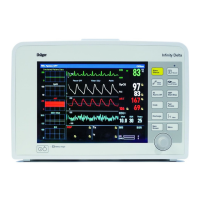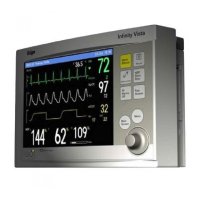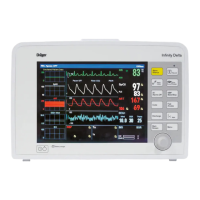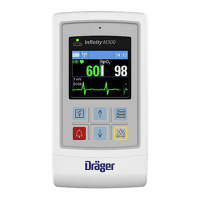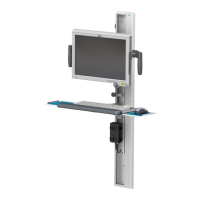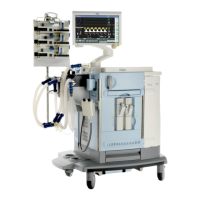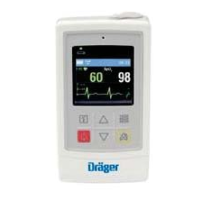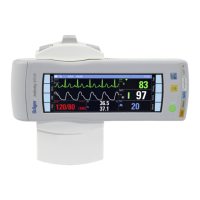HARDWARE
VF8 DELTA/DELTA XL/KAPPA 18-5
Hardware
The transcutaneous monitoring system consists of a tpO
2
/CO
2
pod, a solid-state
sensor, and a calibration unit. The sensor contains two temperature sensors, a heating
element, and a combined O
2
and CO
2
sensing element. The sensor heats the patient’s
skin, increasing local blood perfusion. Oxygen and carbon dioxide diffuse through the
heated skin and the sensor measures their values on the skin’s surface. In neonates,
episodes of hypoxia and hyperoxia can therefore be quickly detected and avoided.
Sensor Warm-Up
The sensor’s heating element must warm the underlying tissue before obtaining
accurate tpO
2
/CO
2
values. The length of the warm-up period varies; it generally takes
10 to 15 minutes. Values displayed in the tpO
2
2/CO
2
parameter box during calibration
and the initial warm-up phase are not clinically useful because the reading is only
stable after the measurement site is warm and local hyperemization is complete.
tpO
2
/CO
2
alarms are disabled during warm-up. The start and end of the warm-up
period are marked on the trend display with a vertical line on the trend graph and an
event marker on the trend table.
WARNING: If the monitor reports a hardware failure, remove
the sensor immediately and do not reapply the sensor until
the problem has been corrected.
1
Calibration fixed key
2
Calibration chamber
3
Connection to tpO
2
/CO
2
electrode
4
Connection to monitor
tpO
2
/CO
2
pod
1
Heating element
2
Solid-state ceramic Severinghaus-
type CO
2
electrode
3
Platinum Clark-type O
2
electrode
4
Temperature sensors (2)
tpO
2
/CO
2
sensor

